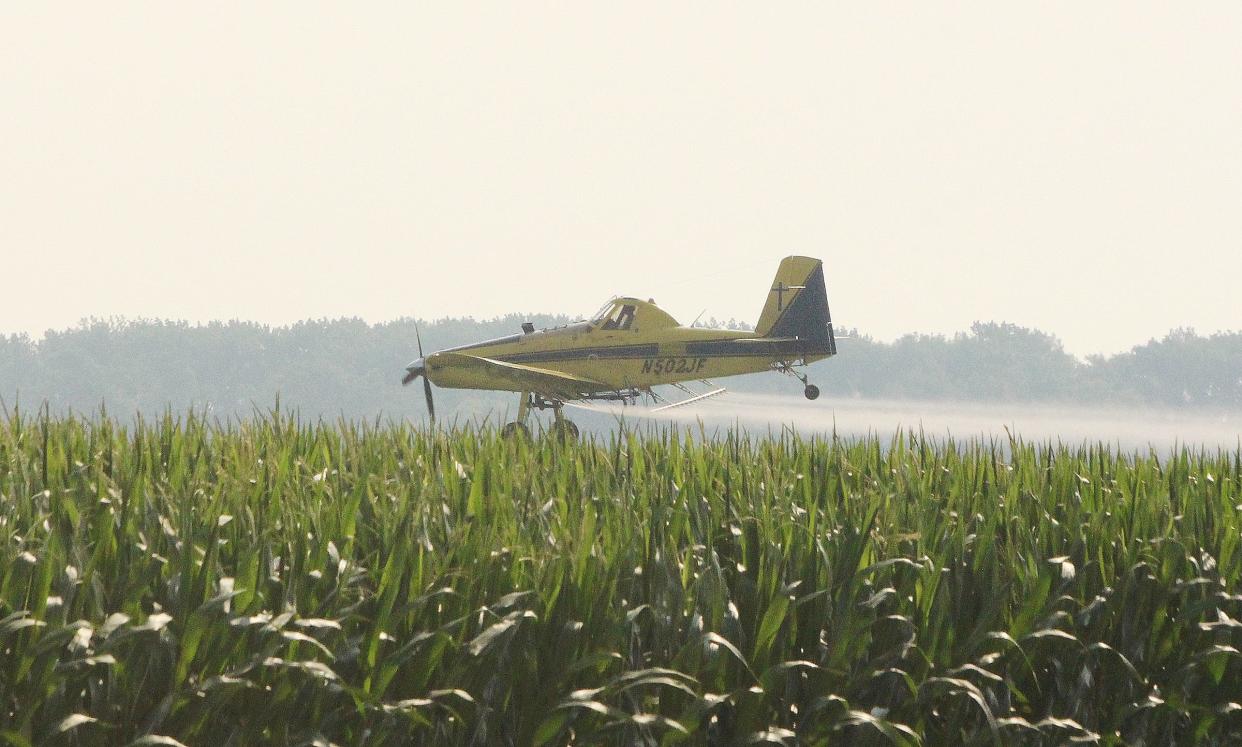Wetter weather means greater risk for crop disease

Thanks to the recent stretch of dry weather, fields in Central Illinois are at low risk for disease so far but that could change.
Now that we have started to get rain, Cody Pettit, an agronomist with Pioneer, believes diseases will start to emerge.
“Fungicide timing is a piece of that and just being able to determine the correct time when disease pressure starts is going to be an important factor as we get more rain this growing season,” Pettit explained.
Delaying fungicide application could be beneficial this year since most growers are planning on a fungicide anyway with some even preparing for two applications.
“I think we are kind of away from that. I don’t know if we’ll see the benefit we did last year,” said Pettit. “We’ve been hotter and drier and we are not seeing that tar spot pressure.”
Pettit feels holding off fungicide timing to possibly R2 or even R3 brown silk could kill two birds with one stone as we will likely see more disease pressure by that time. Later applications on corn can help with grain fill and add to kernel depth.
When it comes to soybeans, Pettit believes R3 is ideal for fungicide application but he has observed benefits spraying anywhere between R2 and R4.
“I always recommend throwing an insecticide in with your fungicide (on soybeans),” Pettit added.
Weather patterns have changed over the past week as several rain events started on July 4 all the way up to this past weekend. Some locations got up to six inches or more from Pontiac down to Fairbury and Champaign.
“A million-dollar rain is what I would call it because we are just heading into pollination and we really need it,” Pettit explained.
There are still pockets of eastern and northeastern Illinois in extreme drought conditions so it will be interesting to see how things turn out this fall.
“I hope they start to get some of the rains we are here.”
Pioneer has new disease model maps that the company has started to send out which track the environment, amount of rainfall and the amount of leaf wetness. Anyone interested should reach out to their Pioneer sales representative.
Crop Report
Tuesday’s USDA report wasn’t so friendly to crop prices as corn ending stocks were higher than expected and soybean ending stocks weren’t nearly as low as anticipated.
For next year, corn ending stocks are at 1.470 billion, which is up 70 million bushels from last month. Soybean ending stocks are at 230 million bushels, which is down 50 million bushels from last month.
“The expectation was for that to be a little lower than that still,” said Aaron Curtis of MIDCO on the CIFN Midday Update Tuesday.
Corn production did increase some because of the higher acres but corn yield did not change. Soybean production was down a bit because of lower soybean acres but there was no change in soybean yield. This is pretty standard for July as USDA typically does not mess with the yield much.
World numbers did not see much of a change. Curtis feels markets won’t spend a whole lot of time focusing on these numbers but will rather focus on outside factors and the weather forecast moving forward.
“Typically, the July report doesn’t move the needle, so to speak, for a very long time,” Curtis said.
Illinois Crop Production information released Tuesday indicated the state’s winter wheat harvested area in 2022 forecast at 720,000 acres, which is up 18 percent from the previous year. Winter wheat yield is forecast at 79 bushels per acre, equal to 2021. Production is forecast at 56.9 million bushels, up 18 percent from last year.
This article originally appeared on Pontiac Daily Leader: Wetter weather means greater risk for crop disease

